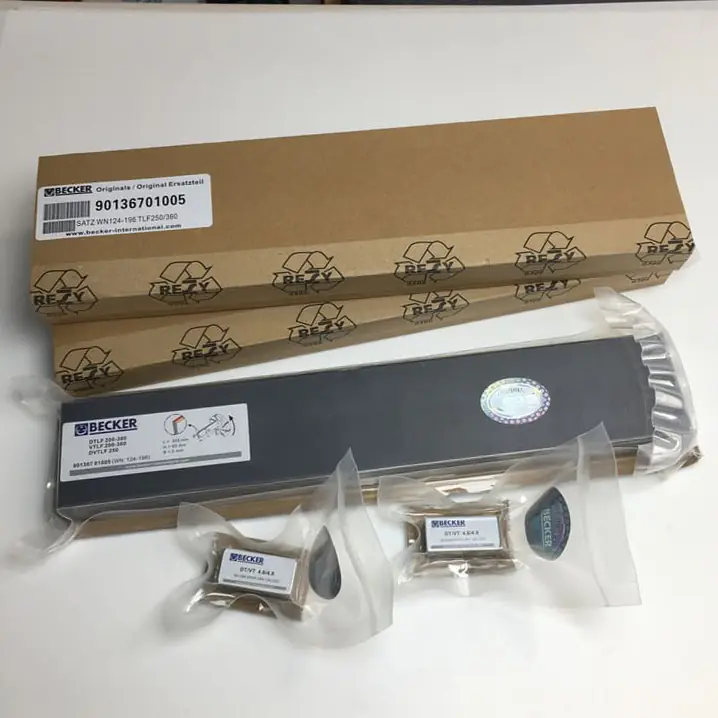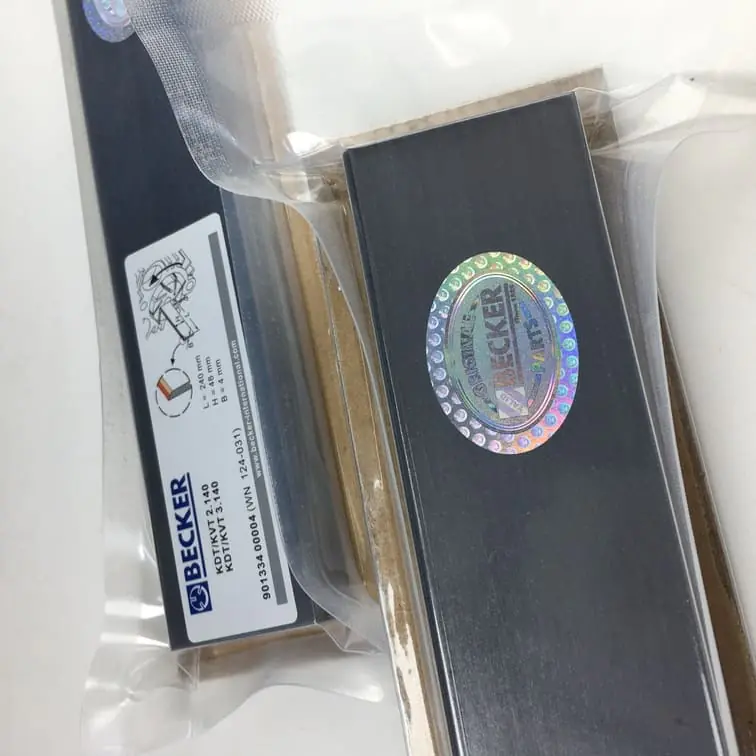How a Car Vacuum Pump Works
The vacuum pump is an essential part of a car’s braking system. It’s a critical component that ensures the brake booster receives enough vacuum pressure to assist in making the braking process easier and smoother. If you’ve ever wondered, “How does a car vacuum pump work?”, this comprehensive guide will walk you through the various aspects, the functionality, and the importance of maintaining a vacuum pump.
A properly working vacuum pump enhances driving safety, particularly in diesel engines where vacuum pressure is not naturally produced. Let’s delve into the mechanics, components, and maintenance tips for keeping your car’s vacuum pump in optimal condition.
What is a Car Vacuum Pump?
A car vacuum pump is a device that removes air and creates a vacuum in the brake booster. This vacuum assists in the braking process by providing enough pressure to allow drivers to push down on the brakes without applying too much force.
In diesel and some turbocharged gasoline engines, there is no natural vacuum source in the intake manifold. Therefore, a vacuum pump is installed to generate the required vacuum pressure.
Common Applications of a Car Vacuum Pump
- Brake Booster Assistance: Helps provide the force required to engage the braking system.
- EGR Valve Operation: The Exhaust Gas Recirculation (EGR) system often relies on vacuum pressure to function.
- Turbocharged Vehicles: Ensures the brake booster has adequate vacuum even in engines where intake vacuum is absent or insufficient.

For additional high-quality parts, check out Vacuum Pump Spare Parts.
Types of Car Vacuum Pumps
There are several types of car vacuum pumps, each with different mechanisms to generate vacuum pressure. Here are some of the most common:
1. Mechanical Vacuum Pumps
These pumps are mechanically driven by the engine’s camshaft, timing belt, or chain. They are commonly found in older car models.
2. Electric Vacuum Pumps
Electric vacuum pumps operate independently of the engine and are often used in modern vehicles, especially electric and hybrid cars, where vacuum sources from the engine are not available.
3. Pneumatic Vacuum Pumps
These pumps are generally found in diesel engines and use air pressure differences to create the vacuum needed for the braking system.
| Type | Power Source | Common Use |
|---|---|---|
| Mechanical | Engine Camshaft | Older Car Models |
| Electric | Battery | Electric/Hybrid Cars |
| Pneumatic | Air Pressure | Diesel Engines |
Components of a Car Vacuum Pump
A car vacuum pump is composed of several essential parts that work together to generate and maintain adequate vacuum pressure.
- Rotor and Vane Assembly: Rotates to create suction and generate a vacuum.
- Inlet and Outlet Ports: The inlet port allows air to be drawn into the pump, while the outlet port discharges it.
- Diaphragm: In diaphragm-type pumps, the diaphragm moves up and down to create a vacuum.
- Check Valve: Prevents air from flowing back into the pump, maintaining consistent pressure.

Interested in premium filters for your vacuum pump? Explore the Becker Air Filter.
How Does a Car Vacuum Pump Work?
Step 1: Activation of the Pump
The vacuum pump activates either when the engine starts (mechanical or pneumatic pumps) or when the car’s electrical system demands it (electric pumps). The source of energy depends on the type of pump installed.
Step 2: Suction Creation
- Rotary Vane Mechanism: The vacuum pump usually contains rotating vanes attached to a rotor. As the rotor spins, it creates suction at the inlet, drawing in air and creating a vacuum.
- Diaphragm Mechanism: In diaphragm pumps, the diaphragm moves up and down, changing the volume of the pump chamber and creating a vacuum.
Step 3: Maintaining Vacuum
The check valve ensures that the vacuum pressure does not drop once the pump reaches its required level. In braking applications, this guarantees that enough vacuum pressure is present to assist the driver whenever they need to brake.
Note: Diesel engines, unlike gasoline engines, do not generate vacuum naturally because they do not have a throttle. A vacuum pump is therefore mandatory.
Step 4: Brake Booster Assistance
The vacuum pump sends vacuum pressure to the brake booster, which amplifies the force applied by the driver on the brake pedal. This makes braking much easier, providing a safer and more comfortable driving experience.
Importance of a Vacuum Pump in Diesel Engines
Diesel engines do not have a throttle valve like gasoline engines, which means they do not generate sufficient vacuum naturally. Instead, they rely entirely on a vacuum pump for the following functions:
- Brake Booster Operation: Ensures the brakes work effectively by delivering sufficient vacuum pressure.
- Emission Control: Powers devices like the EGR valve, crucial in reducing nitrogen oxide emissions.
For the best maintenance results, consider installing Becker Air Filters.
Symptoms of a Failing Car Vacuum Pump
Recognizing the signs of a failing vacuum pump early can save you from major issues down the road. Here are some of the common symptoms:
1. Hard Brake Pedal
If the brake pedal becomes difficult to press, it’s a strong indicator that your vacuum pump is not supplying enough vacuum to the brake booster.
2. Decreased Braking Efficiency
When the vacuum pump fails, the brake booster cannot effectively amplify the braking force, leading to reduced braking performance.
3. Hissing Noises
If you hear a hissing noise coming from the engine bay, it could mean that the vacuum pump or a connected hose is leaking, reducing vacuum pressure.
4. Check Engine Light
A malfunctioning vacuum pump can trigger the Check Engine light, especially if it affects components like the EGR valve.
How to Test a Car Vacuum Pump
Testing your car’s vacuum pump can help determine whether it is functioning properly. Here is how you can do it:
Step 1: Gather Tools
You will need a vacuum gauge and basic hand tools.
Step 2: Connect the Vacuum Gauge
Attach the vacuum gauge to the vacuum line leading from the pump. Ensure the connections are tight to prevent leaks.
Step 3: Start the Engine
With the engine running, observe the gauge. A typical vacuum pump should generate between 15-20 inches of mercury (Hg).
Tip: If the vacuum level is below the expected range, inspect the hoses and check for leaks. It might also indicate an internal failure within the pump.
Maintenance Tips for a Car Vacuum Pump
Maintaining a car vacuum pump is crucial for ensuring longevity and consistent performance. Follow these maintenance tips to keep your vacuum pump running smoothly.
1. Check the Oil (For Mechanical Pumps)
Many mechanical vacuum pumps require oil. Check the oil levels regularly and replace it if necessary to maintain proper lubrication.
2. Inspect the Hoses
Regularly inspect vacuum hoses for any signs of cracks or damage. A small leak can drastically reduce the pump’s efficiency.
3. Replace Filters
Keeping your vacuum pump clean is key to long-lasting performance. Replace the air filters regularly to prevent contaminants from affecting the vacuum pressure. Check out these Replacement Air Filters to ensure optimal performance.
Frequently Asked Questions
1. What is the primary role of a car vacuum pump?
The primary role of a car vacuum pump is to generate a vacuum for the brake booster, ensuring safe and effective braking.
2. Can a car run without a vacuum pump?
In most diesel engines and turbocharged gasoline engines, a vacuum pump is essential. Without it, braking efficiency would be greatly reduced.
3. How do I know if my vacuum pump needs replacing?
If you notice symptoms like a hard brake pedal, hissing noises, or the Check Engine light, it may be time to replace the vacuum pump.
4. How often should a vacuum pump be serviced?
Service intervals depend on the car’s make and model, but generally, you should inspect your vacuum pump during regular maintenance and replace components as necessary.
5. Can I replace a vacuum pump myself?
Replacing a vacuum pump is a moderately difficult task that involves removing engine components and connecting vacuum lines. If you’re confident with your mechanical skills, you can do it, but it might be better left to professionals if unsure.
Conclusion
Understanding how a car vacuum pump works is essential for maintaining your vehicle’s braking system and overall safety. A well-functioning vacuum pump ensures your brakes operate smoothly, providing the pressure needed for efficient stopping power, particularly in diesel and turbocharged engines. From generating the required vacuum to assisting in various systems like brake boosters and EGR valves, the car vacuum pump plays a vital role in ensuring the vehicle runs safely and efficiently.
Regular maintenance—like checking for leaks, replacing worn-out parts, and testing the pump’s performance—will keep your vacuum pump in great shape. Visit Vacuum Pump Parts for high-quality replacement components and make sure your vacuum pump stays reliable for years to come.




